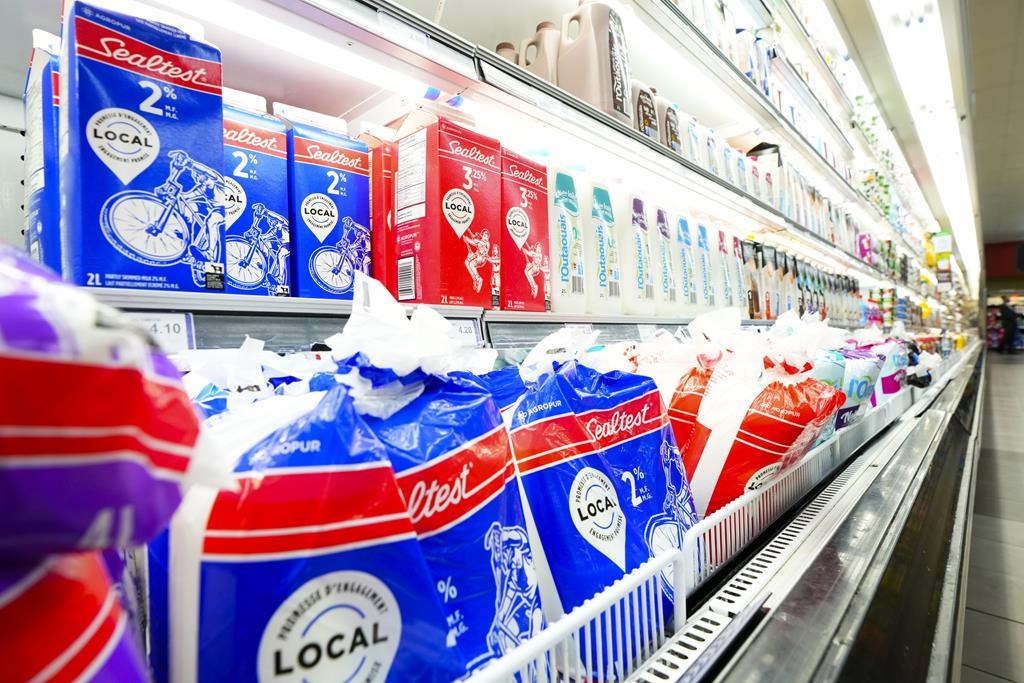Grocery store prices rising in the fall: Canadian food suppliers

Posted July 13, 2022 11:19 am.
Canadian food suppliers are once again telling grocery retailers that price hikes are on the way.
The price increases will hit grocery stores this fall in a year that has already seen nearly double digit increases in food costs.
In some cases, the higher prices are due to the Canadian Dairy Commission’s (CDC) approval of a second milk price increase this year. That will see farm gate milk prices go up about two cents per litre, or 2.5 per cent, on Sept. 1.
However, dairy processing companies appear to also be tacking on their own increases, the so-called piggybacking of price hikes some industry observers warned would happen.
Lactalis Canada, for example, says in a letter to its customers it must implement an average national market increase of five per cent this September, a rate it says takes into account the CDC pricing increase and “significant inflationary costs” the company is facing.
Arla Foods Canada issued a similar notice, saying price increases on its products coming this September reflect higher milk ingredient costs and the “inflationary impacts across freight and packaging.”
Sylvain Charlebois, professor in food distribution and policy at Dalhousie University, says food processors always try to figure out ways to pass on extra costs.
“The approach is actually much more aggressive than before, because stakes are much higher, the inflation rate is basically at 10 per cent,” Charlebois said. “A lot of consumers know how the inflation rate is impacting them, but it’s also impacting relationships within the supply chain.”
He adds there is a possibility of dairy producers pricing themselves out of the market.
“When you see dairy prices go up in the dairy section of the grocery store, consumers will be looking around for other options,” he said.
“With supply management, dairy farmers don’t really look at the market that way, they just look at fair pricing and that’s it. If they don’t need to produce as much milk, then so be it, they realign quotas. That’s really the problem with supply management, with higher prices in retail, you will price yourself out of the market and you won’t need as many dairy farms at all.”
READ MORE:
-
Inflation soars to 7.7% in May, highest in nearly 4 decades: Statistics Canada
-
Bank of Canada raises interest rate by full percentage point to 2.50%
-
What is ‘shelflation’ and why it affects the way you buy groceries
Charlebois adds consumers now have more options at the grocery store, as the price of dairy alternatives, such as oat and almond beverages, get closer.
“If you go to a coffee shop and they charge you extra for non-dairy, it’s less justifiable to do that now, because price points are basically the same,” Charlebois explains.
He says food inflation may have peaked in June or July, but time will tell if price increases have truly started to calm down.
“We’re going to get numbers for June next week in Canada, the U.S. is coming out today. We are expecting a higher number but we are expecting food inflation to peak sometime in Q3.”
With the Bank of Canada raising interest rates again, Charlebois says consumers should get a break from food price increases in other sections of the grocery store.
Gary Sands, senior vice-president of public policy with the Canadian Federation of Independent Grocers, says the increases in milk and cheese prices highlight price hikes by companies.
“The timing of the increases almost seems like they are piggybacking on top of the regulated increases,” he said. “The net effect is to further exacerbate the issue and concerns around affordability.”
Affordability concerns are especially acute in rural and remote communities where transportation and fuel surcharges are higher, Sands adds.
“The increase in price for these essential products is of particular concern in those communities,” he said.
The price of food purchased at stores rose 9.7 per cent in May compared with a year ago as the cost of nearly everything in the grocery cart went higher, Statistics Canada said last month.










